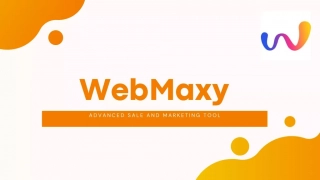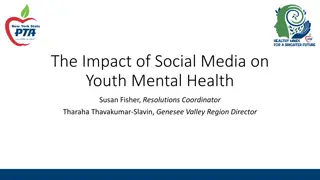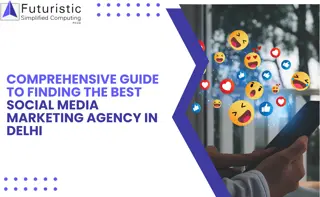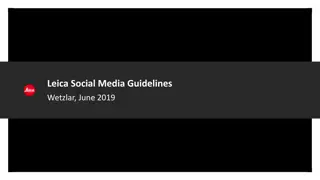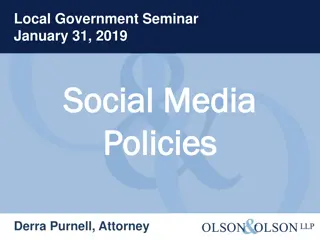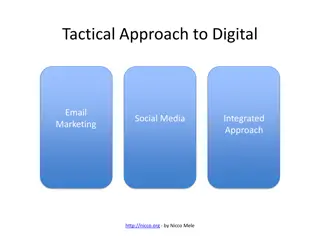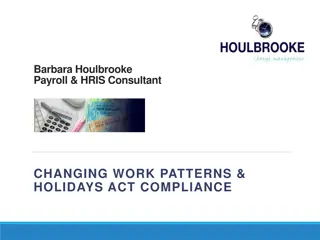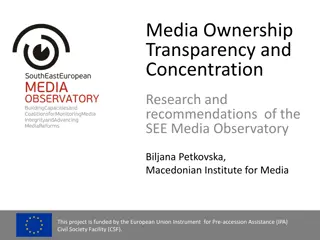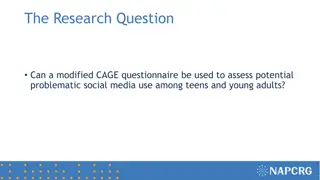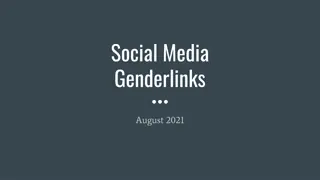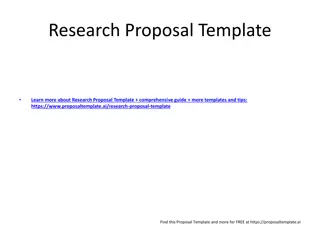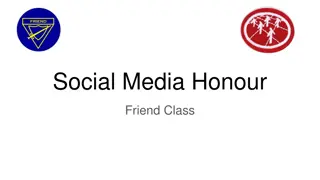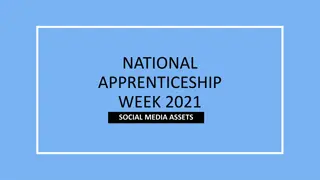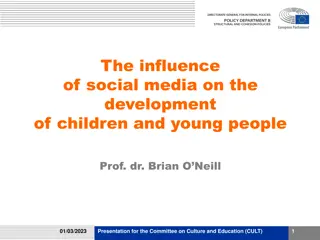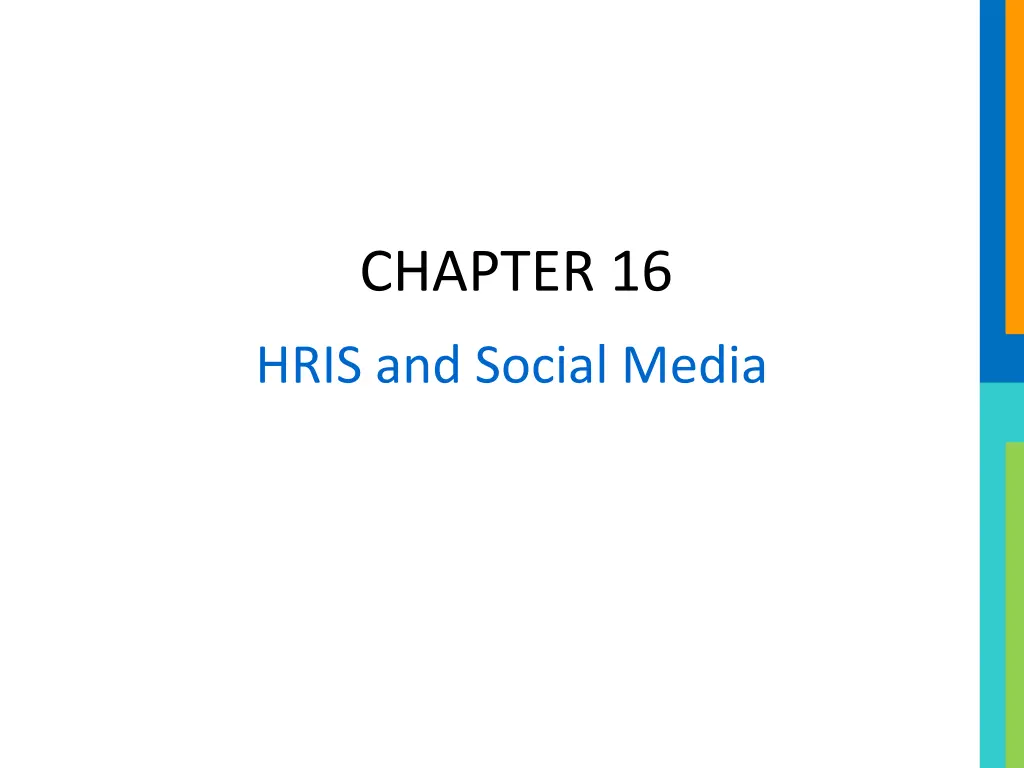
HRIS, Social Media, and Organizational Recruitment Trends
Explore the impact of social media on HRIS, global usage statistics, and how organizations are leveraging online platforms for recruitment and selection strategies to attract and retain top talent in this digital age. Learn about the evolution of social recruiting, the importance of utilizing social media tools in the recruitment process, and the popular recruitment sites preferred by companies worldwide.
Download Presentation

Please find below an Image/Link to download the presentation.
The content on the website is provided AS IS for your information and personal use only. It may not be sold, licensed, or shared on other websites without obtaining consent from the author. If you encounter any issues during the download, it is possible that the publisher has removed the file from their server.
You are allowed to download the files provided on this website for personal or commercial use, subject to the condition that they are used lawfully. All files are the property of their respective owners.
The content on the website is provided AS IS for your information and personal use only. It may not be sold, licensed, or shared on other websites without obtaining consent from the author.
E N D
Presentation Transcript
CHAPTER 16 HRIS and Social Media
WHAT IS SOCIAL MEDIA? Social media: Internet-based platforms based on Web 2.0 technologies that allow users to generate and exchange content (Kaplan & Haenlein, 2010). Whereas Web 1.0 is a readable information portal that has allowed users to receive information without the opportunity to respond back via posts or comments, Web 2.0 is a writable platform that facilitates interaction between users and sites in a continuous and collaborative manner and promotes participation and information sharing (Laroche, Habibi, Richard, & Sankaranarayanan, 2012). Kavanagh, Human Resource Information Systems 4e. SAGE Publications, 2018. 2
GLOBAL USAGE OF SOCIAL MEDIA Globally approximately 2.34 billion people access social media sites regularly (eMarker, 2016), a 9.2 % increase since 2015. Many companies are using SMW to attract new employees and to connect, inform, and retain their existing workforce; most companies are still not sure of how cost-effective these tools are. Although Americans are familiar with popular SMWs such as LinkedIn, Instagram, Pinterest, and Facebook, other countries may have different patterns of SMW use and tools utilized. Kavanagh, Human Resource Information Systems 4e. SAGE Publications, 2018. 3
ORGANIZATIONAL RECRUITMENT AND SELECTION Rapid diffusion of the Web and new technologies has significantly changed the landscape of how we communicate with each other and how organizations use technology to attract, acquire, and retain a new generation of employees. Organizations are using online software, social networks, and other platforms to conduct what is now called social recruiting (Wauters, 2011). Kavanagh, Human Resource Information Systems 4e. SAGE Publications, 2018. 4
ORGANIZATIONAL RECRUITMENT AND SELECTION As companies compete to attract and retain talented workers, especially those with specialized skills, developing an effective recruiting strategy is a key concern for organizations. The extensive amount of information available on social media sites has made social network sites (SNWS) a good venue for organizations to learn more about potential hires, and organizations are increasingly using the Internet as a resource to select new employees. Organizations are also more readily using SMWs to search for passive applicants (SHRM, 2016), who might not otherwise apply to or be contacted by an organization. Kavanagh, Human Resource Information Systems 4e. SAGE Publications, 2018. 5
POPULAR RECRUITMENT SITES Many organizations are recruiting employees via social media by actively managing their social media presence and using recruitment tools to attract applicants. Presently, LinkedIn is among the most popular professional social networking sites used by organizations. Twitter is also effective for increasing exposure and communicating with groups of individuals who want to follow organizations. As such, many organizations have created job channels on Twitter to communicate with and to attract new talent (Heathfield, 2015). Kavanagh, Human Resource Information Systems 4e. SAGE Publications, 2018. 6
TRAINING AND DEVELOPMENT As organizations compete in a global market, businesses need to prepare their employees to be more effective. Social media tools can assist organizations in this process in multiple ways, such as informing teams separated by geographic distance, time, culture, and organizational boundaries. Organizations can also use social media tools to assess metaknowledge about the type of employees it has, as well as their knowledge, skills, and abilities. For instance, Avaya used collaborative tags to identify organizational experts and integrated these data into a communication system (John & Sleligman, 2006). Kavanagh, Human Resource Information Systems 4e. SAGE Publications, 2018. 7
INTERNAL COMMUNICATION AND ENGAGEMENT According to a recent Gallup Poll (2013), 70% of the American workforce feels disconnected, or not engaged, at work. Lack of engagement at work can lead to higher absenteeism, higher turnover, and lower firm performance. SMW can support employee engagement in a number of ways. First, it can improve internal communications, can improve the sharing and exchanging of ideas, and can increase feelings of inclusion (Ruggs & Speights, 2013). Kavanagh, Human Resource Information Systems 4e. SAGE Publications, 2018. 8
INTERNAL COMMUNICATION AND ENGAGEMENT Many organizations are actively using social media to increase employee engagement. For example, L Oreal, a cosmetics company, believes that people will have greater trust in information about what it is like to work for a company when it comes from their peers on social media rather than from the company (Simpson, 2015). Kavanagh, Human Resource Information Systems 4e. SAGE Publications, 2018. 9
CONCERNS Some organizations have experienced problems with social media, such as the dissemination of inappropriate posts and decreased employee productivity (Landers & Callan, 2014). Research indicates that up to 86% of employees are connected via social media to a work associate, and 77% indicated they used social media while at work. But 36% also indicated that they utilized social media while at work against company policy (O Conner et al., 2016). Kavanagh, Human Resource Information Systems 4e. SAGE Publications, 2018. 10
CORPORATE SOCIAL MEDIA In an effort to address employee usage of social media, many companies have implemented social media policies to protect their professional reputations as well as proprietary information from exposure (O Connor et al., 2016). Organizations also need to ensure that they provide adequate training for their employees. Although the majority of organizations (80%) have a social media policy (Rubenstien, 2014), it is not clear that companies have provided their employees with training on the policy and if the employees are even aware of policy specifics (O Connor et al., 2016). Kavanagh, Human Resource Information Systems 4e. SAGE Publications, 2018. 11
RECRUITMENT AND SELECTION A majority of organizations are utilizing SNW as part of their recruitment and selection strategies. But organizations should also exercise caution when using them because of because of potential legal issues associated with using them in this way, and the inability to verify with confidence the profile information on these sites. Kavanagh, Human Resource Information Systems 4e. SAGE Publications, 2018. 12
VALIDITY OF SMW IN SELECTION Another concern for human resource decision-makers is the fact that organizations may be unable to infer with relative validity the qualifications, personality, and/or integrity- related information on an applicant s profile when using SNWs. Little evidence that shows employers are making valid inferences about applicants job performance based on their social networking data (Kluemper, Rosen, & Mossholder, 2012; Roth et al., 2012) Research suggests that the spread of false information through social media can have negative ramifications for organizations and employees (Black et al., 2014). Kavanagh, Human Resource Information Systems 4e. SAGE Publications, 2018. 13
OTHER CONCERNS: PRIVACY Legal concerns for organizations and can potentially lead to applicant perceptions that their privacy was invaded (Gross & Acquisti, 2005; Tabibi, 2012). Kavanagh, Human Resource Information Systems 4e. SAGE Publications, 2018. 14
OTHER CONCERNS: DIVERSITY Risk of adverse impact: research has shown that individuals from lower socioeconomic backgrounds are less likely to have Internet access and use of computers (Kuhn & Skuterud, 2000; McManus & Ferguson, 2003). Kavanagh, Human Resource Information Systems 4e. SAGE Publications, 2018. 15
OTHER CONCERNS: FEDERAL AND STATE GUIDELINES The FCRA primary goals Ensure that job applicants are explicitly notified of and consent to any background checks that are done when credit, education, military service, and/or medical records are obtained Ensure that job applicants are given the opportunity to correct any misinformation contained therein before any decisions are made by the employer. Kavanagh, Human Resource Information Systems 4e. SAGE Publications, 2018. 16

